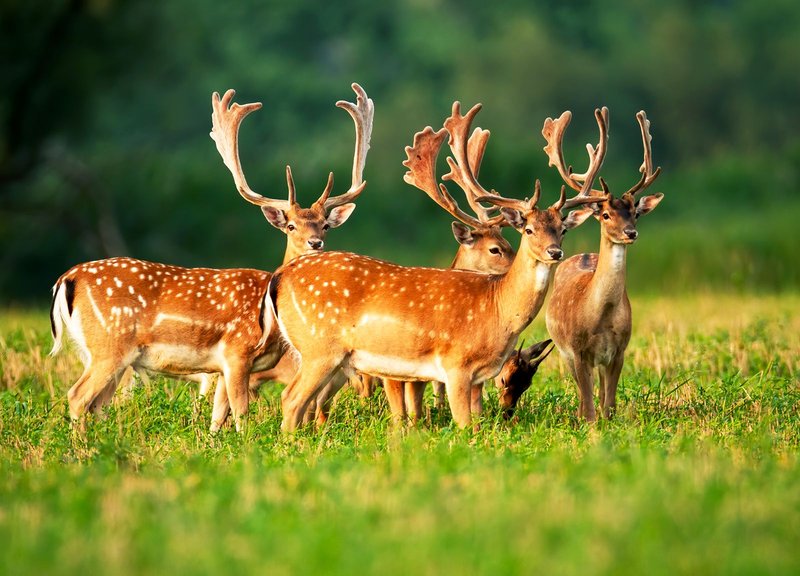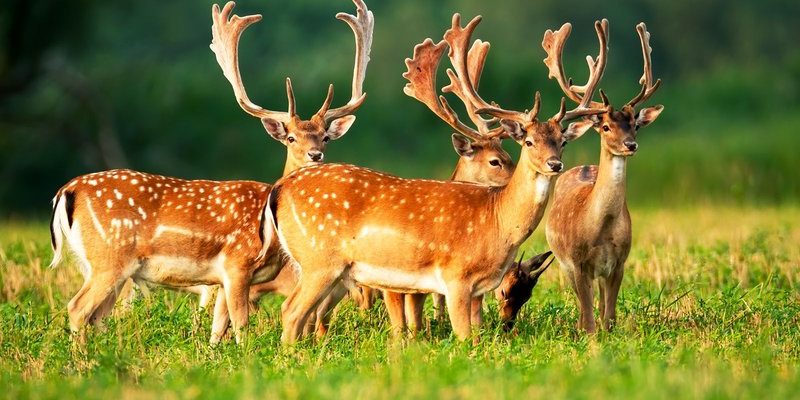
Think about it this way: if you’re going on a journey, you need to know what snacks to pack and how to stay safe along the way. Fallow deer, with their beautiful spotted coats and unique antlers, follow similar principles. They have their favorite foods and clever ways to evade predators. Let me explain how they navigate their environment, what they eat, and how they hunt—or rather, how they avoid being hunted.
What Do Fallow Deer Eat?
When it comes to the diet of fallow deer, it’s all about variety and adaptation. These deer are *herbivores*, mainly munching on grass, leaves, and shrubs. Imagine a buffet spread: they feast on the fresh greens of spring, the crunchy leaves of summer, and even acorns in the fall. Here are some staple foods in their diet:
- Grasses: A primary food source, especially in meadows and forests.
- Fruits: They enjoy berries and apples, which give them a sweet treat.
- Leaves: During winter, they rely on the foliage from trees.
- Seeds: These provide essential nutrients in various seasons.
Fallow deer are quite the foragers. In spring and summer, they graze on lush grasses, but as seasons change, their diet shifts too. You might be wondering, how do they know what to eat? Well, they rely on instinct and experience, often foraging in areas where they can find the most nutritious options.
How Fallow Deer Forage
The way fallow deer forage is fascinating. They’re not just mindlessly munching; they have strategies! When foraging, they tend to be selective, picking the most nutritious leaves and grasses. Here’s how they go about it:
1. Timing Is Key: Fallow deer often graze during dawn and dusk, avoiding the heat of the day. This not only keeps them cool but also helps them stay hidden from predators.
2. Group Dynamics: These deer are social animals. They often forage in groups, which provides safety in numbers. If one deer senses danger, it can alert the others, allowing them to escape swiftly.
3. Listening to Their Surroundings: Fallow deer have keen senses. They use their excellent hearing and sight to detect nearby predators while they snack. It’s like having a sixth sense for danger while enjoying a meal.
Predators of the Fallow Deer
To truly understand the fallow deer, we must also consider their foes. These deer have several natural predators, including wolves, coyotes, and even humans. The threat of being hunted is ever-present, and that’s where their savvy hunting strategies come into play.
Most of the time, these deer rely on their stealth and speed to escape danger. When they sense a predator nearby, they often freeze, blending into their surroundings. Their spotted coats act like camouflage, especially in dappled light. If that doesn’t work, they’re capable of leaping away, sometimes covering distances of over 30 feet in a single bound!
Another fascinating fact is that fallow deer can change their activity patterns depending on the presence of predators. If they notice that a certain area is particularly dangerous, they might shift their grazing to a safer spot. It’s like having a backup plan in case your favorite coffee shop suddenly closes!
Seasonal Changes and Their Impact on Diet
Just like we adjust our wardrobes with the seasons, fallow deer modify their diets throughout the year. Let’s break it down by season:
– Spring: This is a time of abundance! Fresh grass and new shoots emerge, providing a feast for the deer. It’s prime time for them to bulk up after winter.
– Summer: As temperatures rise, they continue to enjoy the lush greenery and fruits, but they must also be careful about dehydration. They often seek out water sources to stay hydrated.
– Autumn: Fallow deer start to notice that food is less plentiful. They begin to consume acorns and other hard seeds, stocking up on nutrients before the chill of winter sets in.
– Winter: The landscape changes drastically. With less food available, these deer rely on tree bark and dried leaves. They’ve adapted to the harsh conditions, but it’s a tough time for them. It’s like living on leftovers when the fridge is almost empty.
Fallow Deer Social Structure and Foraging Behavior
Fallow deer are social animals, which impacts their foraging behavior. They often form groups called herds, especially during the breeding season. Here’s how their social structure helps them strategize:
– Leadership Roles: In a herd, older and more experienced deer often take on leadership roles. They know the best foraging spots and will lead the group to food sources.
– Learning from Each Other: Younger deer learn foraging tactics by watching the adults. It’s a bit like a student learning from a teacher. This collective knowledge helps ensure that everyone finds food successfully.
– Communication: Fallow deer communicate through various sounds and body language. This allows them to express discomfort or alert the group if they spot a predator. It’s teamwork at its finest!
In wrapping up our exploration of the diet and hunting strategies of the fallow deer, it’s clear that these creatures exemplify resilience and adaptability. Their ability to adjust their diets based on the seasons and their smart foraging techniques show just how well they’ve adapted to their environments.
By understanding their eating habits and survival strategies, we gain a greater appreciation for these beautiful animals. Honestly, the next time you see a fallow deer, take a moment to marvel at not just their grace, but their cleverness in the wild. These strategies have been honed over generations, ensuring they thrive despite the challenges of nature.

